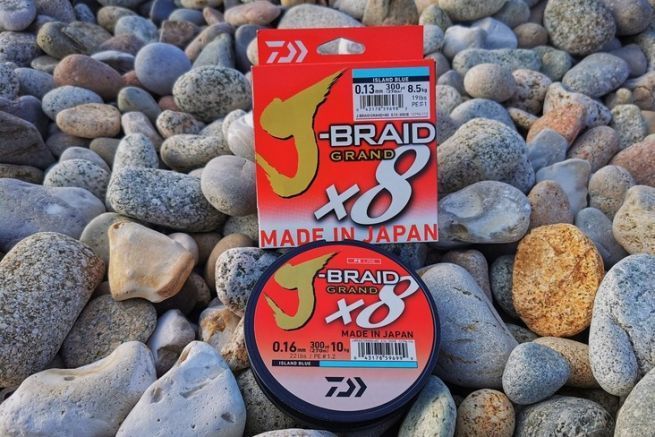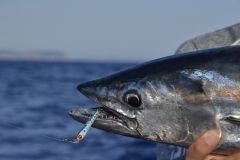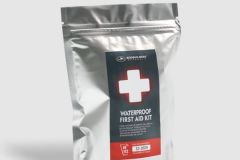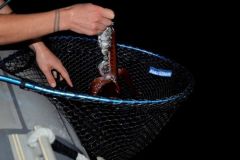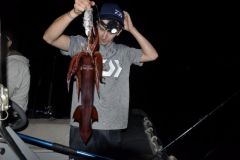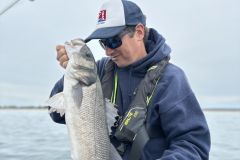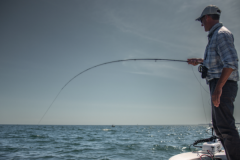Quality 8-strand braid
I'm a fan of 8-strand braids, which generally combine a fairly fine diameter with good glide and resistance.
This braid, distributed by Daiwa and made in Japan, meets these criteria perfectly. When you hold it in your hand, it is totally smooth and feels very round.
Available in 12 diameters from 6/100 to 51/10, it can be used for almost all types of fishing. Spool capacities range from 135, 200, 300, 500 and 1500 m, making it suitable for all types of reel, with a choice of 3 colors.
My choice of braid
I chose to use it in 2 different diameters that I use constantly regardless of the brand:
- The PE1 with an advertised diameter of 13/100 and a resistance of 19 lbs. I use this reel for fine fishing, from the shore or on a boat, where discretion is essential and I'm looking for casting distance in uncrowded places. A small braid diameter allows you to increase throwing distances, as I explained in a previous article .
- The PE 1.2, advertised at 22 lbs, for its versatility, allowing me to use a stronger fluorocarbon without the risk of systematically breaking the connection knot in the event of a hook.
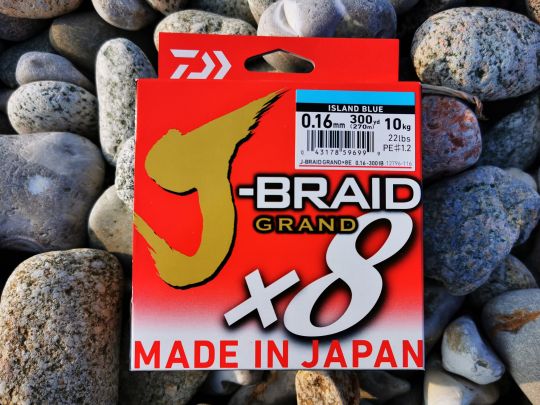
My feedback
After ten or so outings with these 2 braids, it's time to give you some objective feedback. I mainly used the Daiwa J-Braid Grand X8 braid from the shore.
I was expecting it to glide well, enabling you to reach long casting distances, which is essential when fishing from the shore. On this point, the quality is there, the braid is fluid when casting and very silent when passing through the rings. No wigging to report.
The advertised resistance was 19 lbs for the PE1 and 22 lbs for the PE1.2.
I therefore used a fluorocarbon with a lower resistance so as not to break at the connection knot in the event of a hook on the bottom. I chose Daiwa's PROREX FC in 30/100 diameter with a resistance of 16 lbs.
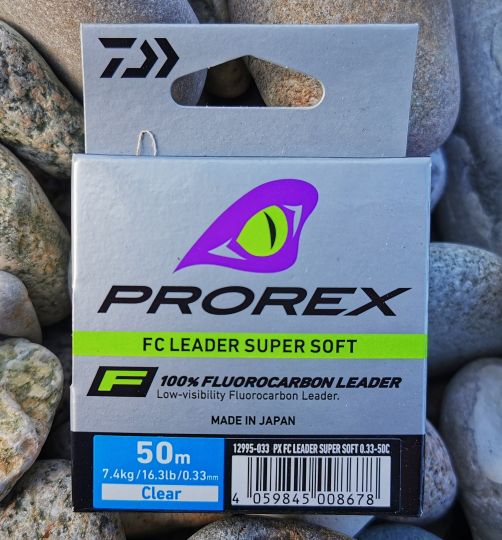
Inevitably, during my outings, I was confronted with a number of eighth-notes at the bottom, which enabled me to check whether the braid/fluorocarbon combinations were good.
For the PE 1.2, I had no doubts and this was confirmed. During the few hooks on the bottom, I broke at the lure and not at the knot. Normal, you might say, given the 6 lbs difference in strength between the fluoro and the braid.
For the PE1 I was less confident. Only 3 lbs less for fluoro. Past experience has taught me that some braids, even top-of-the-range ones, are far from the advertised resistance and make braid/fluoro combinations totally obsolete. In this case, no problem, I always broke at the lure and never at the knot.
Note that I used the "Peixet" knot, which I consider one of the strongest and easiest to tie.
Practising from the shore has allowed me to put it through a lot of abrasion from repeated contact with the rocks. It holds up well, even with the smallest diameter. It doesn't wear out too quickly, allowing you to continue fishing with peace of mind.
Its strengths
- Value for money
- Advertised resistance consistent with actual resistance
- More abrasion-resistant than "classic" J-Braid
- Good glide
Areas for improvement
There aren't many of them, but perhaps a PE12 diameter for bluefin tuna fishing enthusiasts, of which I am one.

 /
/ 